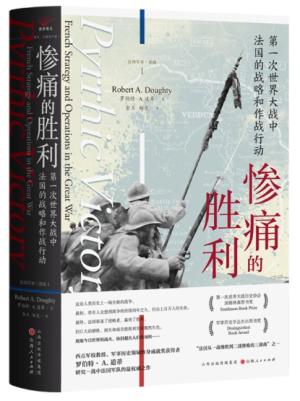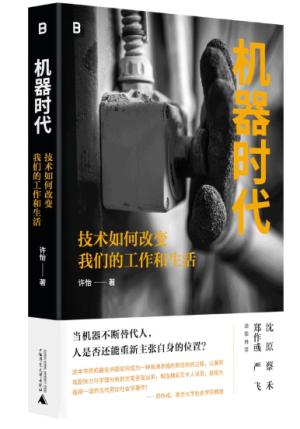新書推薦:

《
睡虎地秦简普及本
》
售價:HK$
327.8

《
资本的全球化:近代上海外商证券市场兴衰史(1843-1941)
》
售價:HK$
107.8

《
纯粹理性批判 德国哲学家康德代表作 西方哲学史的里程碑著作 著名翻译家蓝公武经典译本
》
售價:HK$
138.6

《
惨痛的胜利:第一次世界大战中法国的战略和作战行动
》
售價:HK$
184.8

《
机器时代:技术如何改变我们的工作和生活
》
售價:HK$
63.8

《
地缘政治与战争:中国历史变局3000年
》
售價:HK$
85.8

《
追踪进化论 在游戏中读懂科学史 《龙与地下城》玩家打造 沉浸式体验进化论 附赠精美计分器
》
售價:HK$
86.9

《
消逝的韩光:华丽韩剧背后的血汗与悲鸣
》
售價:HK$
69.3
|
| 內容簡介: |
|
《Application and Extension of Numerical Methods in Heating Pipeline(数值方法于供热管道的应用及拓展)》建立一套从管道理论到传统供热管道应用再到创新拓展的完整的逻辑体系。主要包含理论基础和案例研究两个部分共四个篇章,开篇讲述了区域集中供热的基础概念、相关标准、发展历程、面临问题及未来的发展趋势。紧接着理论基础部分针对区域供热管网的基本特征安装及敷设方式做了介绍。案例研究分为三个篇章,其中第二篇章对不同结构的供热管道从安全性及经济性两方面着手进行了详细的数值研究;第三篇章在供热管道的基础上转向能源输运管道,输运介质从原来的热水、热蒸汽转向了石油天然气;*后第四篇章将传统供热刚性管道数值研究技术革新并成功应用到了生物弹性血管的研究方面,利用工学的数值模拟技术解决医学临床问题。
|
| 目錄:
|
|
Contents1 District Heating 11.1 District Heating Systems 11.1.1 Overview of District Heating Systems 11.1.2 Development of District Heating System 21.1.3 Industry Standard of District Heating System Pipe Network 81.1.4 Problems of District Heating System Pipe Network 131.1.5 Future Development of District Heating Systems 25References 282 Basic Characteristics of Heating Pipeline Network System 312.1 Heating Pipeline Network 312.1.1 Prefabricated Insulation Pipe Structure 312.1.2 SoilMass 362.2 Long-Distance Transmission and Supply Pipe Network System LayingMethod 402.2.1 Laying on the Ground 412.2.2 Underground Laying 432.3 Installation of Heating Pipeline Network 472.3.1 Installation Components of Heating Pipeline Network 472.3.2 Layout of Heating Pipeline Network 502.3.3 Installation Method of Heating Pipelines 54References 553 Basic Theory of Long Distance Pipeline 573.1 Basic Theory of Fluid Solid Thermal Coupling 583.1.1 Development of Fluid Structure Thermal Coupling Cooperation 583.1.2 Definition and Classification of Fluid Solid Thermal Coupling 603.1.3 Fluid–Solid–Thermal Coupling Calculation Theory 663.1.4 Research Methods for Fluid Solid Thermal Coupling 743.1.5 Theoretical Analysis of Multi Field Coupling 78References 814 Theory of Elastoplasty and Economic Evaluation for Directly Buried Insulated Pipeline Systems 834.1 Development of Pipeline Elastoplasticity 834.2 Elastoplastic Definition and Classification of Pipeline 854.2.1 Elastoplastic Definition and Characteristics of Pipeline 854.2.2 Elastoplastic Classification of Pipelines 874.3 Pipeline Elastic–Plastic Calculation Theory 894.3.1 Calculation Theory of Elasticity 894.3.2 Calculation Theory of Plastic Mechanics 924.3.3 Definition and Classification of Pipeline Heat Loss 934.3.4 Theoretical Calculation of Heat Loss 944.4 Economic Evaluation of Pipe Network Operation 1024.4.1 Economic Evaluation Theory 102References 1045 Case Study on Fluid–Solid Thermal Coupling in Heating Pipelines 1075.1 Effects of the Temperature and Pressure Loads Coupled on Structure Stress of “L”-Type Large-Diameter Buried Pipe Network 1085.1.1 Overview 1085.1.2 Numerical Model 1095.1.3 Results and Analysis 1115.1.4 Conclusion 119References 1216 Effects of End to Side Displacement Load on Structure Stress and Deformation of “L”-Type Large-Diameter Buried Pipe Network 1236.1 Overview 1236.2 Numerical Model 1246.3 Results and Analysis 1256.3.1 Equivalent Stress and Strain Distribution of Pipeline Network Under Equivalent Displacement Load 1266.3.2 Effect of Equivalent End Displacement Release on Equivalent Stress and Deformation of Pipelines 1276.3.3 Equivalent Stress and Deformation Distribution of Pipelines Under Non-Equivalent Displacement Loads 1306.3.4 Effect of Unequivalent End Side Displacement Release on Equivalent Stress and Deformation of Pipelines 1306.4 Conclusions 133References 1347 Analysis of Fluid–Solid–Thermal Performance of L-Shaped Pipeline System 1357.1 Overview 1357.2 Numerical Model 1367.3 Results and Analysis 1397.3.1 Comparison of Experimental Parameters 1397.3.2 Analysis of Pressure and Temperature Fields in the Fluid Region 1417.3.3 Deformation Distribution Performances of the Pipeline Under Different Loads and Laying Conditions 1427.3.4 Influences of Different Loads on Maximum Deformation of Elbow 1467.3.5 Influences of Coupling Action on Maximum Deformation of an Elbow 1497.4 Conclusions 150References 1518 Coupled Validity Analysis of Solid-Heat Multi-Field Model for Straight Tube Flow 1538.1 Overview 1538.2 Numerical Model 1548.3 Results and Analysis 1578.3.1 Stress and Deformation Distribution of Pressure Pipeline Along Axial Direction and Cross-Section 1588.3.2 Stress and Deformation Distribution of Pipeline Under Separate Action of Temperature Loading and Pressure Loading 1608.3.3 Distribution of Stress and Deformation in the Axial Direction at Critical Points of the Pipe Cross-Section Under Coupling Action 1658.4 Conclusions 166References 1679 Influence of Key Structural Parameters on Total Heat Loss and Heat Transfer Between Tubes 1699.1 Overview 1699.2 Numerical Model 1719.3 Results and Analysis 1739.3.1 Influence ofKey Structural Parameters on the Total Heat Loss of the System 1739.3.2 Influence of Key Structural Parameters on Heat Transfer Between Tubes 1769.3.3 Influence of Dimensionless Characteristic Parameters on the Total Heat Loss of the System and Heat Transfer Between Pipes 1769.3.4 Influence of Dimensionless Characteristic Parameters on Heat Loss Cost and Material Consumption Cost 1809.4 Conclusions 183References 18410 Case Study on External Load Action of Large Diameter E
|
|









